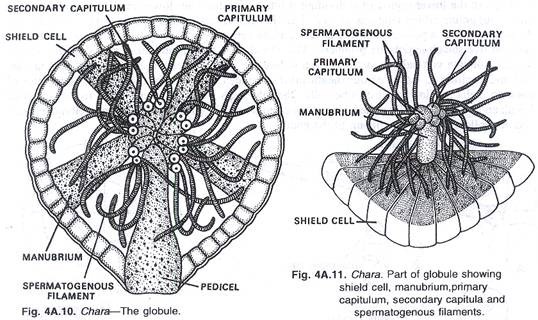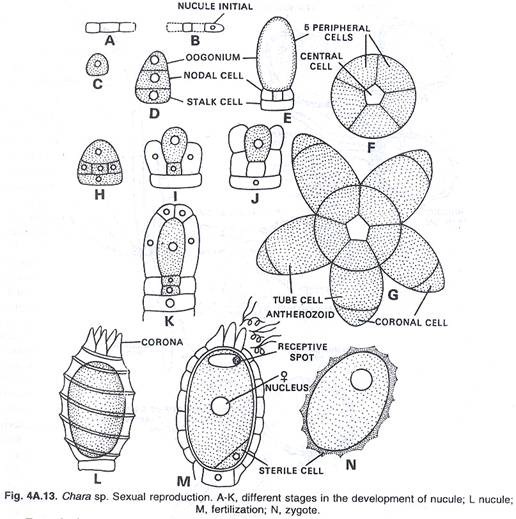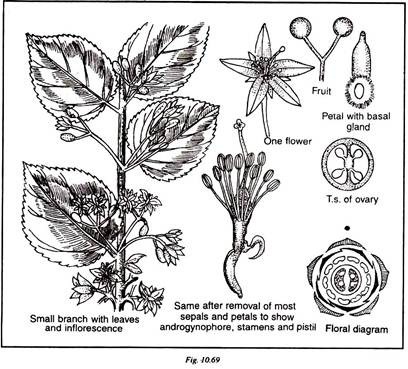In this article we will discuss about the features and classification of four general groups of microorganisms:- 1. Rickettsias 2. Chlamydias 3. Planctomycetes 4. Verrumicrobiota.
Group # 1. Rickettsias:
Most live in an obligate intracellular association parasitic or mutualistic, with eukaryotic hosts (vertebrates or arthropods); a few can be grown on moderately complex bacteriological media containing blood. Their cell walls contains muramic acid.
While glutamate is oxidised with ATP generations. Mainly they are rod-shaped, coccoid, and often pleomorphic that stain gram-negative and lack flagella. The parasitic species are associated with the reticuloendothelial and vascular endothelial cells or erythrocytes of vertebrates and often with various organs of arthropods, which may acts as vectors or primary hosts. The mutualistic species are found in insects. Important Genera are: Bartronella, Graharnella and Rochalimaea.
It is named after Howard T. Ricketts who identified this microorganism as the causal organism of typhus and Rocky Mountain spotted fever. Unfortunately he along with his co-worker, Baron von Prowazek died from this infection.
They are small, Gram-negative coccobacilli which are obligate intracellular parasites; grow in the cytoplasm of infected cells of mammals and arthropods. Rickettias can be cultured only in embryonated eggs and grow at 35°C.
Genera of Rickettsias in infected persons cause Typhus fever in of three different forms that includes:
(i) Epidemic typhus by R. prowzekii,
(ii) Brill-Zinsser disease, or recrudescent typhus by the type of antibodies formed, and
(iii) Epidemic typhus elicits IgM and then IgG antibodies. R. tsutsugarmushi causes scrub typhus and grows mostly in nuclei.
Coxiella rochalimaea quintana causes trench fever and it is the only genus that grows on artificial medium. Bartonella hemselae causes bacillary angiomatosis and weakens the immune system. Coxiella burnetii causes Q fever which is a pneumonia-like disease.
Group # 2. Chlamydias:
These are non-motile, obligate parasite; coccoid bacteria multiply with in membrane bounded vacuoles in the cytoplasm of the cells of humans, other mammals, and birds (Arthropods do not act as host). The multiplication occurs by means of a unique development cycle, which divides by fission. They are pathogenic. The specialised techniques are involved for their cultivation.
These are small (0.2-1.0 µm) rod or cocoid. Gram-negative having both DNA and RNA. They are non-motile, obligate parasite, cocoid bacteria that live inside the host cells. They are pathogenic. The cell walls are devoid of muramic acid and glucose is not oxidized with ATP generation, hence parasite depends upon the host ATP cells.
The specialized techniques are involved for their cultivation. They are present in two different forms during their life cycle. A large, metabolically active reticulate body which is non-infectious with flexible cell wall and a smaller form are present which is called elementary body.
This body causes infection and can attack other cells of the same host or transmitted to new hosts. They multiply by a process of attachment of elementary body to the host cell wall followed by phagocytosis, conversion, reproduction, condensation and release of the elementary and reticulate bodies by description of the wall material. The reticulate body divides by binary fission.
There are three species of Chlamydia psittaci which cause severe pneumonia in humans and parrot fever in birds, whereas P. pneumonia causes human respiratory infection. C. trachomatis is a major cause of the eye infection trachoma. Some strains of C. trachomaits also causes sexually transmitted disease called lymphogranuloma venereum. The Chlamydias are transmitted by air.
Group # 3. Planctomycetes:
The group Planctomycetes is among the most unusual members of the bacteria. In 1900, for the first time they were isolated from aquatic habitat. But none were reported till 1971 in pure culture form. Even now, some of them have not been reported to grow on artificial culture media.
Most of them are unusual budding heterotrophic bacteria that lack peptidoglycan similar to that of Chlamydias. But it contains crateriform structures and distinctive pits located on their cell surface. Several genera Pirellula, Gemmata, Planctomyces bekefii, Isosphaera pallida, etc. have been described.
They are the poorly studied among bacteria due to their non-culturable behaviour. Recently, an uncultivated planctomycete has been implicated in a novel geochemical process, anaerobic nitrification, in which ammonia is oxidized to nitrate and nitrite acts as an electron acceptor.
Group # 4. Verrumicrobiota:
The Verrumicrobiota are mostly found in soil and aquatic habitats. Since, most of them are non-culturable, they have been placed in diverse phylogenetic group based on 16S rDNA sequences revealed by the clonal library.
Prosthecobacter and Verrumicrobium are heterotrophic aquatic bacteria. Prosthecobacter has holdfast for attachment to algae. Recent studies have enlightened that at least some members of Verrumicrobium have α and β-genes for tubulin synthesis.
No prokaryotes have been known so far for this feature. Tubilin genes have been reported in all eukaryotic organisms. Another bacterial genus Xiphinematobacter is a protist symbiont known as surface stranger referred as epixemosome.
This bacterium produces a proteinaceous ‘harpoon’ that shot from its cells outward towards the other protist under threat (Fig. 2.8). This remarkable feature appears to be novel in the microbial world.


